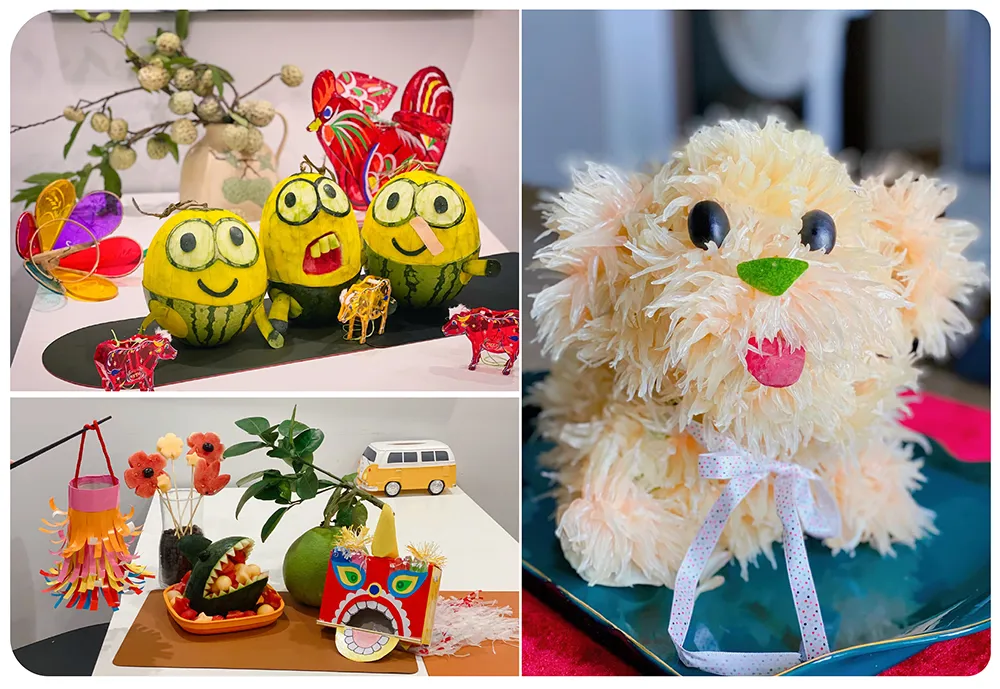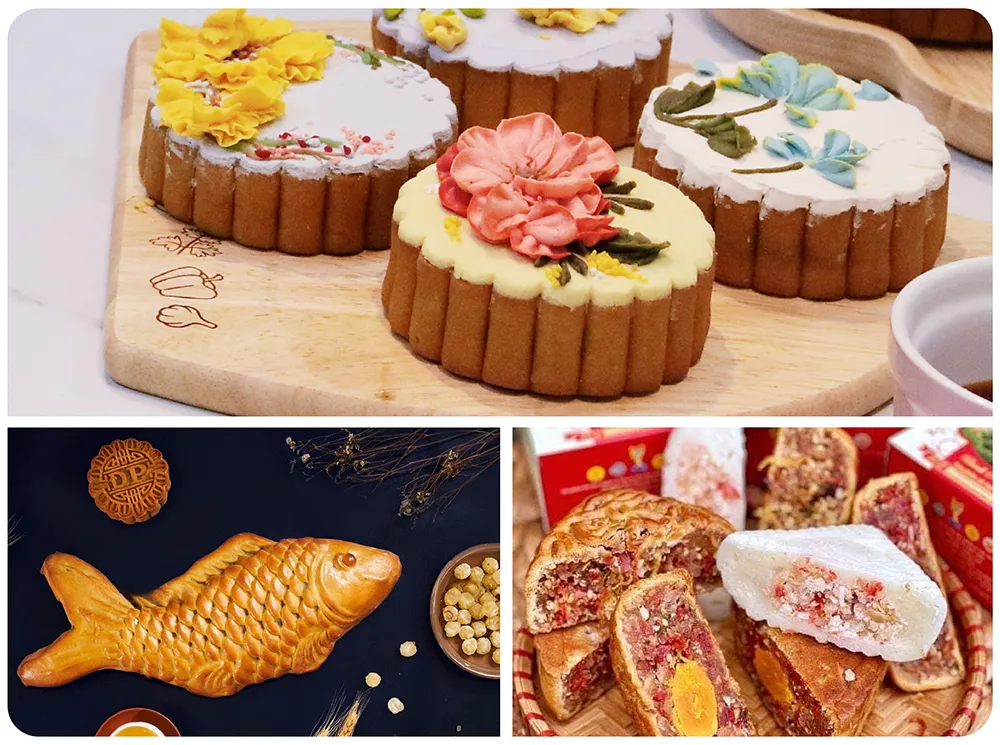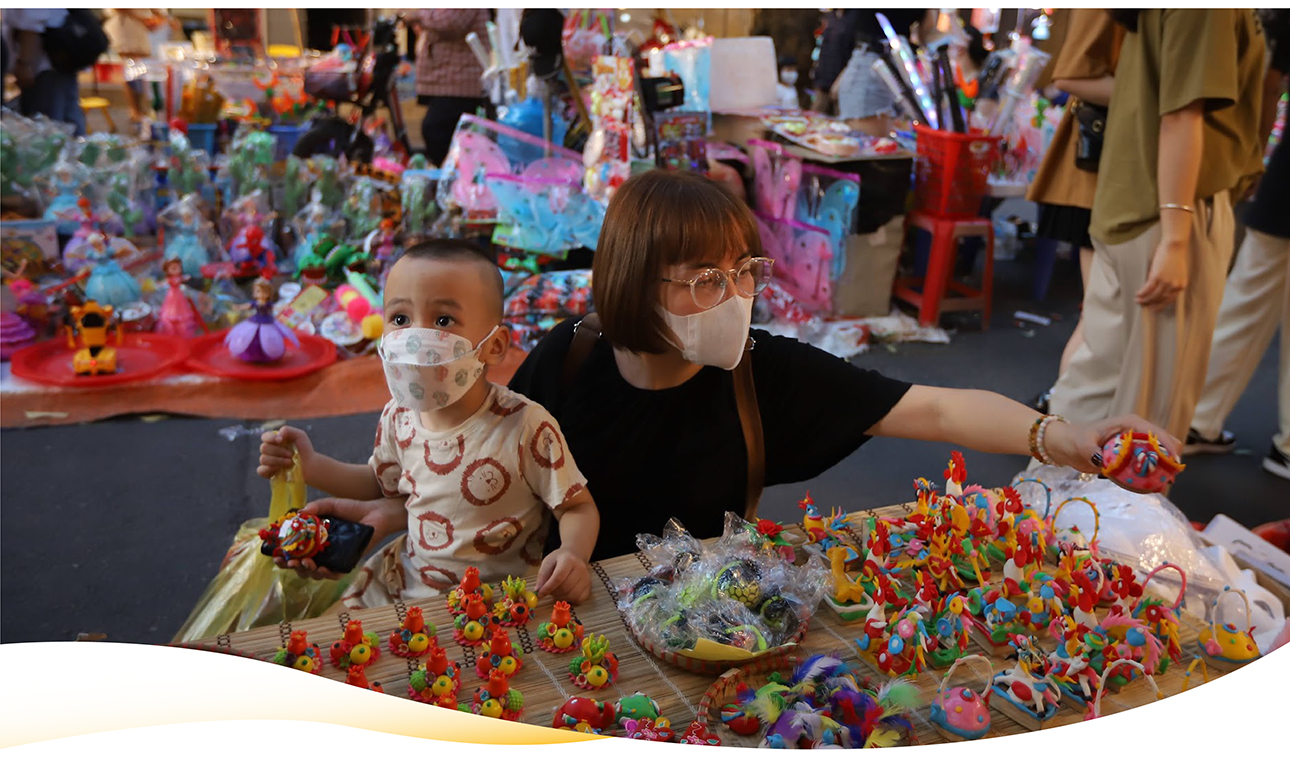Full moon treat
Preparing the Mid-Autumn Festival for children is a fine traditional practice of Vietnamese people that is still preserved today.
It felt a bit like Christmas, meeting with friends and proudly clutching beautifully packaged boxes in bright red carry bags. Mid-Autumn Festival is a time to feast, drink, and be merry.
The time when the moon is at its fullest and roundest is fast approaching, falling on September 10 this year. In Vietnam, as well as other Asian countries, this time of year and especially the Mid-Autumn Festival are one of the most popular family holidays.
According to historian Le Van Lan, the meaning of the Mid-Autumn Festival has transformed over time.
“Originally it was the time for farmers to celebrate the end of the summer harvest. Later, it is meant mostly for kids. Parents were working so hard to prepare for the harvest that they left the children to take care of themselves. To make up for this, the parents tried to give their children the most fanciful Mid-Autumn Festival possible to express their love” he explained to The Hanoi Times.
This tradition has continued through to the present day. Several days before this special occasion, Vietnamese families plan activities for their children. Parents buy them lanterns so that they can participate in a candlelit lantern procession at dawn.
To get a taste of the local festival, stroll along Hang Ma Street in Hanoi, Luong Nhu Hoc Street in District 5, HCMC, and Tran Hung Dao Street in Hue. During the festival, the streets are usually full of toys for the occasion and packed with people shopping, watching, and playing.
In the days leading up to the festival, Hang Ma Street, which is often known for selling paper votive offerings, bustles with children and parents shopping for Mid-Autumn toys.
On the night of the full moon, the whole street turns into a playground lit with a red light beaming out from lanterns of all shapes and sizes. Masks, drums, paper flutes, and toys are stacked everywhere and children and adults alike jostle each other as they shop.
The most popular Mid-Autumn toys for children are paper masks, depicting the land genie, pigs, buffaloes, rabbits, lions, and lanterns of different shapes, styles, and sizes.
However, according to Le Van Lan, the toy market for children in the mid-autumn season has changed in modern days. “Many toys are imported, while traditional playthings are slowly disappearing,” he told The Hanoi Times.
However, some artisans still spend their day making lanterns in the hope that old-fashioned mid-autumn festival toys will survive and the festival’s spirit from previous generations will be preserved.
Preparing a tray of fruit is the most important part of a traditional Mid-Autumn Festival. On Full Moon Night, each family watches the moon and enjoys a tray of fresh fruit, including grapefruit, banana, persimmon, guava, and watermelon in the living room or the front patio of the house.
While parents get the fruit from the garden or market, children also prepare their own fruit trays made from colored dough or clay. With help from their parents or other adults, they complete their work in time to watch the moon. While enjoying the Full Moon feast, adults tell children some folk stories about Chi Hang -the Lady Moon or Chu Cuoi - the man on the moon.
The lion dance is one of the most expected games during the festival, and it is no wonder it attracts huge audiences. Young people usually make big lion heads from cardboard, wear a red and yellow uniform, and form a group of five to ten to perform and compete with one another.
The show includes playing drums, dancing and martial arts performing. After the competitions, the ‘lions’ go around rousing an animated atmosphere, and people give them tips as lucky money.
The lantern parade is also an interesting focus of Full Moon Night. Each child will carry a lantern featuring a star, a carp fish, a butterfly, or a bird with different colors and go around in big groups through all the neighborhood lanes and streets. Together they sing many folk songs while visiting every house in the area to ask for sweets or cakes.
Once upon a time, whenever the moon is at its fullest in the year, the Banh trung thu or mooncake with a round shape is offered to the Gods.
Mooncakes, come in two basic types: banh nuong - baked moon cakes and banh deo -soft white cakes. The brown ones represent yang elements, or the sun, and the white ones the moon. Most people don't know the symbolism but just enjoy them for their taste.
Mooncake’s sweet fillings range from durian, taro, coconut, and green soy with lotus seeds, to couplings of coconut-durian or green bean-lotus seed with a salted egg in between for flavor.
Although the size of a cake is nearly as big as a Big Mac, don’t just chomp into it! The time-honored, customary etiquette is to cut a mooncake into quarters or eighths, then take one piece and daintily eat it while sipping on piping hot tea.
There is a tradition of bieu or presenting mooncakes to friends, family, and special customers-if you run a business, from four to two weeks before Tet Trung Thu. One offers a box of these special cakes to someone you wish to please or to someone you owe a favour.
Gargantuan cakes of up to 600 grams in a boxed gift set of four cost around VND300,000 or US$12.7. Ornamental-style, baked green bean-centred pigs nursing piglets that representing family bonding and twin carp fish, standing for prosperity, make great gifts as well.
In addition to cakes, fruit is plentiful during this time, especially watermelon and grapefruit. Grapefruit sections are often cut into animal shapes, like the rabbit of the moon, which according to legend pounds the ambrosia of immortality at the foot of a cassia tree.






.jpg)














